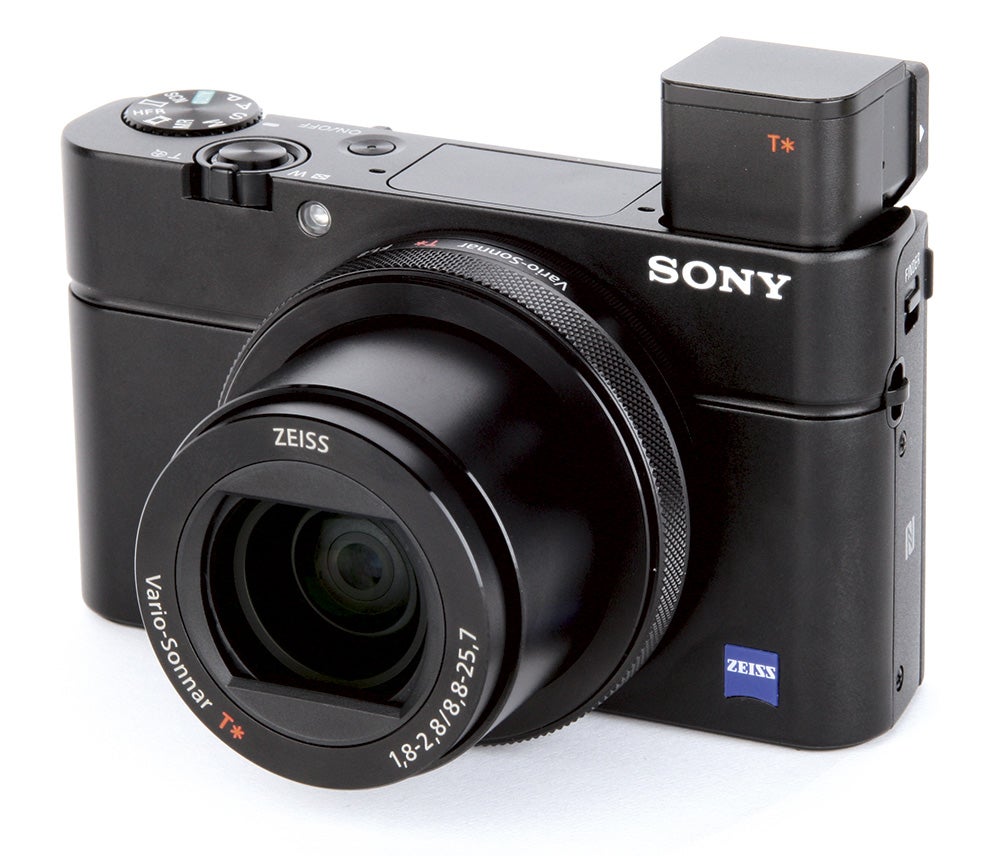Michael Topham and Andy Westlake take a look back over the camera developments made this year, and choose the advances in technology they like best
The rise of the viewfinder
Andy Westlake looks into this year’s trend for bigger and better electronic viewfinders

The Leica SL’s ‘EyeRes’ viewfinder is the best we’ve ever seen
The camera market has changed dramatically over the past few years. As smartphones have become the tool of choice for casual shooters, manufacturers have shifted their attention to enthusiast photographers, as the only group still prepared to buy and carry actual cameras. With this comes a renewed focus on working out the particular features that photographers really want.
One very welcome result of this has been a revival of the eye-level viewfinder. On the majority of new digital camera models, this now means an electronic, rather than optical one. And this year, electronic viewfinders have not only appeared on a greater variety of cameras than ever before, but have also got larger, sharper and generally better.
So why does this matter? Well, to me, eye-level viewfinders are important creative tools. By focusing your attention purely on your composition and blanking everything else from your vision, they help you concentrate on setting up the shot. A useful side effect is that holding the camera up to your eye also provides greater stability, reducing image blur from camera shake.
Electronic viewfinders also give 100% coverage of your composition, and can overlay huge amounts of shooting information including useful tools like electronic levels and highlight clipping warnings. It’s also possible to preview the effects of all your exposure settings – not just in terms of image brightness, but also depth of field, white balance and colour mode. This can make EVFs incredibly powerful creative tools.
Types of finder
On fixed-lens compacts, Sony has continued to work with its innovative pop-up viewfinder, which has appeared in cameras as diverse as the Cyber-shot DSC-HX90V pocket superzoom, the Cyber-shot DSC-RX100 IV enthusiast zoom compact and the Cyber-shot DSC-RX1R II premium compact. This design has the advantage of keeping cameras small, although with no space for an eyecup it’s more susceptible to glare in bright light.

Sony uses a pop-up finder on the RX100 IV
Canon seems finally to have woken up to the new trend, and has fitted a centrally mounted EVF to its latest enthusiast zoom compact, the PowerShot G5 X. The resultant ‘shrunken DSLR’ design has a lot to like about it, with the centrally mounted viewfinder being very natural to shoot with.
Panasonic, meanwhile, has stuck with a corner-mounted viewfinder in its Lumix DMC-TZ70 travel zoom, but hugely increased the resolution compared to last year’s TZ60. This alone makes for a much better shooting experience, although the EVF is still rather small. The Lumix DMC-FZ330 superzoom bridge camera, in contrast, gains a viewfinder that’s both much bigger and sharper compared to its predecessor.
When it comes to CSCs, the major manufacturers now seem to have settled on a two-tiered approach, with large finders on their top-end models that rival the optical finders on full-frame DSLRs, and slightly smaller ones on less expensive models that can still match the best APS-C DSLRs. Olympus, Panasonic and Sony have all put really excellent finders into cameras like the OM-D E-M5 II, Lumix DMC-GX8 and Alpha 7R II respectively.
The outright best viewfinders we’ve seen, though, have come from a slightly surprising source: Leica. We were blown away by the 3.7-million-dot unit on the Q (Typ 116) full-frame compact, and were pretty confident it wouldn’t be matched for quite some time. So Leica promptly came out with a 4.4-million-dot ‘EyeRes’ EVF on the SL (Typ 601) CSC that, with its 0.8x magnification, is the best viewfinder I’ve seen on any stills camera. Indeed, where once we might have praised a really good EVF for being almost as good as using a DSLR, we’ve now reached the point where DSLR finders look unsophisticated in comparison.
This is all great news for photographers, as any tool that makes it easier to take the pictures you want has got to be a good thing. Even better, we’ll surely see these ultra-high resolution panels appear in more cameras soon, especially as top-end models are due from the likes of Fujifilm, Olympus and Panasonic during 2016.




